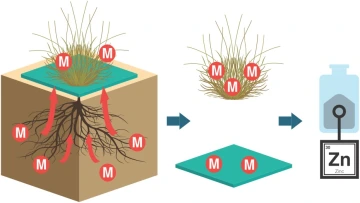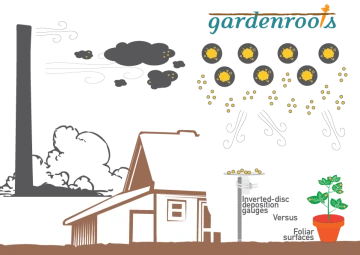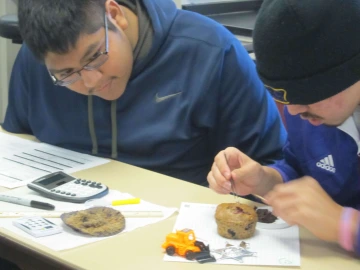CESM pilot research and community development projects have been pursued since 2011. CESM's exploratory research helps facilitate broad cross-campus collaboration between UArizona academic partners to enhance sustainable mining practices in Arizona. Scroll down to view past exploratory research projects. Click here to browse our exploratory research projects.
Associated UA Sustainable Mining Grants
Featured Past Projects
Surface Modified Foams and Hydrophilic Gels Tailored to Remove Toxic Heavy Metals from Contaminated Soils and Water

Heavy metal contaminated soils and water are widespread in the US resulting from mining and other industrial activities. This project envisions these contaminated waste materials as an economic resource. The project is designed to demonstrate that foams and hydrogels chemically modified with ligand groups will i) bind zinc cations and improve the efficiency of their removal and separation from contaminated soils and water, and ii) support plant growth and increase zinc phytoextraction from metal-contaminated substrate by hyperaccumulating plants. Dr. Loy’s research group is chemically modifying foams and hydrogels to create gel-foam composites with high capacity for metal binding with enhanced structural integrity relative to hydrogels by themselves. These foams and gels will then be tested with plants in green house studies to evaluate their ability to enhance the capacity of plants to extract and concentrate contaminant metals of economic significance.
Number of students trained through this project: 17 (7 undergraduates, 9 graduate students, 1 post-doctoral student)
Strategies to Monitor Fugitive Dust Emissions from Industry Operations: Foliar Surfaces as Dust and Aerosol Pollution Monitors

Dust emissions are a constant problem in arid and semi-arid regions, especially for mines and cement, rock and rock products, and aggregate companies. For such industries, in dust-rich regions, a dust event characterized by significant particulate matter emissions and reduced visibility can lead to a significant fine from regulatory agencies.
Building on previous successes (Gardenroots and peer-reviewed research in the journal Science of the Total Environment), we will analyze archived samples and continue to determine the efficacy of foliar surfaces as a method to sample aerosol pollutants in ambient air as it relates to dust in mining communities. Important knowledge gaps include how effective different plants and their associated leaves are in terms of aerosol collection and what parameters can be optimized for a specific type of plant.
Number of students trained through this project: 1 (graduate student)
Mining Educational Modules for the Tohono O’odham Community College

Mining and environmental educational modules were developed for the Tohono O’odham Community College (TOCC) to enhance the understanding of mining, environmental impacts of mining, and remediation techniques. Educational modules were independently packaged units of study to enhance the learning process and could be modified and adapted to different learning scenarios and objectives. The benefits of educational modules were hands-on activities, incorporation of technology, student involvement, discussion, and exchange of ideas. Modules incorporated traditional ecological knowledge and native ways of knowing to promote effective learning of science for native students and contribute to individual applied knowledge to meet tribal environmental needs.
The education modules created for TOCC were a huge success and have been modified for use in K-12 education on the Tohono O’odham Reservation. UArizona graduate students have been regularly recruited to present these modules on mining and the environmental impact of mining to students on the Tohono O’odham Reservation.
Other Past Projects
Erosion Prediction Model Development for Tailings Embankments
Mine site reclamation/closure involves reforming and/or covering waste material to minimize erosion by rain and windstorms. Exposure and transport of the waste material can create erosion issues that create significant perpetual costs for mining materials associated with erosion mitigation. The specific objective of this project was to improve two-dimensional numerical erosion prediction models for application to erosion prone tailings embankments to improve erosion resilience following mine closure. BHP Copper has continued to fund this project. More details are included under the Erosion Mitigation Industry-Academic Research Cooperative.
Roles of Obligate Oligotrophic Bacteria in Unreclaimed Mine Waste Sites
Mine tailings and waste rock represent residual source materials deposited following mineral ore extraction. These mine wastes are difficult to restore to a natural ecosystem because they are nutrient poor and microbial deficient. This project seeks to characterize the novel obligate oligotrophic bacteria that colonize these waste materials and explore their functional value to mine waste reclamation processes.
Garden Roots in Superior, AZ
Community members in Superior, Arizona, collected and sent in water, soil and dust samples in August 2019 as part of a community movement to understand the environmental impact that past mining has on their area. This community involvement is thanks to the partnership formed between the Concerned Citizens & Retired Miners Coalition in Superior and Dr. Mónica Ramírez-Andreotta with the University of Arizona Superfund Research Project (UA SRP).
Identifying Processing Constraints in Historical Copper Production and Market Data
The purpose of this project was to identify constraints in copper production, examine the implication of constraints on copper futures term structure and subsequently on the business cycle.
Collaborative Investigation of In-situ Biosequestration for Remediation of Uranium in Groundwater at the Monument Valley UMTA Site
This project investigated the long-term efficacy of an in-situ biosequestration technique for remediation of uranium-contaminated ground water at the Monument Valley Site (AZ). The technique uses microbially-induced reducing conditions that lead to uranium sequestration through precipitation and deposition. The project studied multiple aspects of the biosequestration process including the manner of sequestration, the long-term stability of sequestered phases and optimal strategies for field-scale implementation.
International Conference on Environmentally and Socially Responsible Mining for the Protection of Vulnerable Populations and Surrounding Environments in Latin America
Support was provided for this three-day, National Institute of Environmental Health Sciences-funded conference. The aim of the conference was to assemble an international working group (from the USA and Latin America) of experts, government officials, non-government organizations, and community and industry leaders to discuss how to implement environmentally and socially responsible mining appropriate to the needs and perspectives of vulnerable populations in the local community. The objective of the conference was to establish this working group.
PM2.5 Particle Matter Emission Factors for a Crusher, Screen, and Conveyor Transfer Point Draft Report
The purpose of this test program was to accurately measure PM2.5 emission factors for a conveyor transfer point, vibrating screen, and tertiary crusher at the Martin Marietta Aggregates, Inc. plant in Burlington, North Carolina. These data will supplement the PM2.5 emission factor data already present in the AP42 Section 11.19.2 emission factor data base. The PM2.5 emission factor data are especially important due to the recent changes in the annual-average PM2.5 National Ambient Air Quality Standard.
Remote Controlled Monitoring for Mine Closure
The project is predicated on developing a low cost, integrated, autonomous system to monitor in-situ soil moisture properties for applications such as the monitoring of dam stability. The system includes networked geophysical, hydrological, and self-calibrating general chemical sensors backed by a secure, integrated web-based data storage and retrieval software system. The solar powered system enables 24/7 remote access to the sensors, data storage units, and control system. This approach includes automated data collection, remote control of data acquisition systems, secure web-based data accessibility, multi-sensor monitoring networks, and critical-event alarm capabilities.
HydroGel Platform for Mitigation of Mine Tailing Dust
The arid environment of the US Southwest poses challenges to the ability to mitigate particulate matter emissions from mine tailing dams as they dry out prior to the addition of new layers. Seasonal drought and high wind conditions compound this problem. The objective of this project is to develop a strong hygroscopic compound that either alone, or embedded in a scaffold, can be layered on top of mine tailings for improved suppression of particulate matter dispersion.

